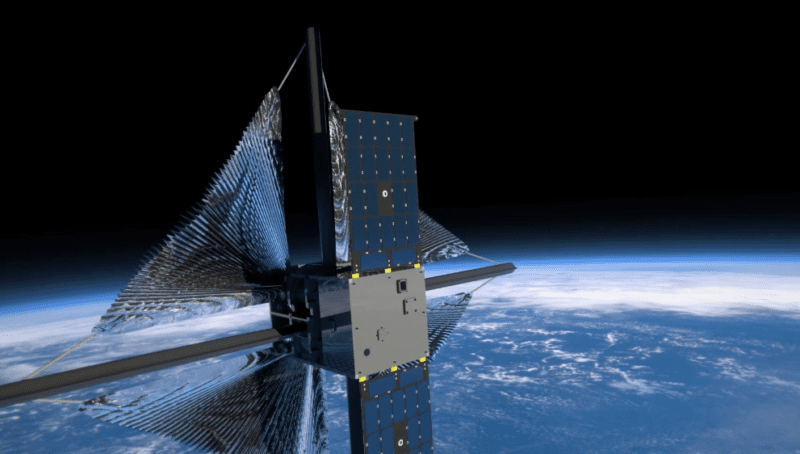Latest News

A rendering of NASA’s ACS3 in-orbit demonstration. Photo: NASA AMES Research Center/NanoAvionics
NanoAvionics will build a 12U nanosatellite bus for an in-orbit demonstration of NASA’s Advanced Composite Solar Sail System (ACS3), the company announced Wednesday. This a result of a contract between NASA Ames Research Center and AST for a 12U bus to carry NASA’s payload into Low-Earth Orbit (LEO), including a composite boom and solar sail system.
The ACS3 mission aims to replace conventional rocket propellants by developing and testing solar sails using sunlight beams to thrust the nanosatellite. These solar sail propulsion systems are designed for future small interplanetary spacecrafts destined for low-cost deep-space and science missions requiring long-duration, low-thrust propulsion.
NanoAvionics will assemble the 12U bus at its new facility in Columbia, Illinois, while the final integration of the payload will be carried out at NASA Ames facilities. The company will also supply a mechanical testbed model and a FlatSat model, and NanoAvionics engineers will support testing, integration and operations for the nanosatellite.
“I’m tremendously proud and excited that NanoAvionics will be part of NASA’s effort to validate a new beam-powered propulsion system, eventually leading to more marvellous deep-space missions following the first inter-planetary cubesats MarCO-A and B (Mars Cube One),” said F. Brent Abbott, CEO of NanoAvionics North America. “The technology demonstration using NanoAvionics’ 12U bus will be the first ever in-orbit trial of NASA’s composite booms as well as sail packing and deployment systems for a solar sail. It will guide the development of a next generation nanosatellites with solar sail propulsion system for small inter-planetary spacecraft.”
Get the latest Via Satellite news!
Subscribe Now